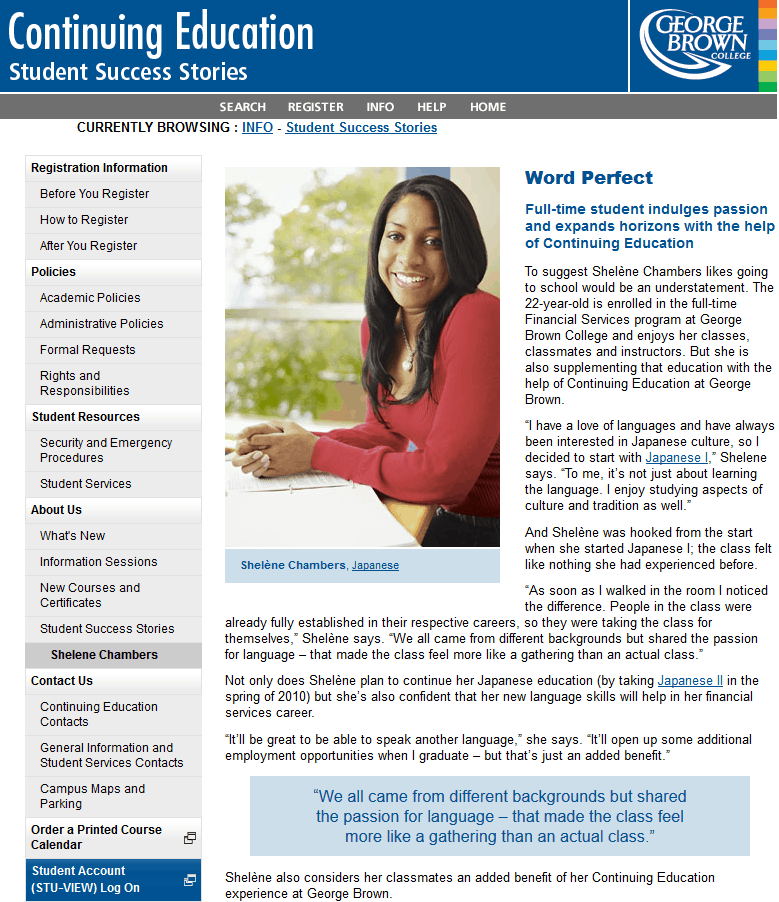Lifelong learning has become a pivotal contributor to the new era of the knowledge economy. As technological innovation accelerates societal change, adult learners are increasingly seeking to update their skills or embark upon new career paths. Education is now cyclical. The modern higher education industry continues to shift away from the traditional cohort model, recognizing that the post-secondary once-in-a-lifetime education paradigm is insufficient for the needs of our evolving society. Continuing education and professional development programs are growing in bottom-line value, requiring a strategic reconsideration of how institutions approach this market.
Throughout the world, a rising number of private tertiary education providers are offering alternative formats to meet the needs of working adults. In Finland, for example, the number of adults in continuing education programs exceeds the number of young people enrolled in traditional degree courses. According to national WALL surveys, about half of Canadian adults were found to participate in further education courses annually, with about 20 percent expressing unmet demand. There is no legal or clear definition of the term “continuing education”, and various other terms are often used interchangeably, but it generally refers to courses or programs offered by special units of colleges and universities. Leaders of university continuing education units in Canada see themselves as addressing the needs and goals of learners seeking professional development, personal enrichment, and enhanced knowledge and skills.
Surging demand for career building
Despite heightened competition and shrinking budgets, several continuing ed programs have been thriving in recent years. Growing public interest in professional and personal development combined with more effective recruitment efforts have led to surging enrolment at institutions such as the University of Toronto. Total registrations at the Mississauga campus have remarkably increased each academic term over the past five years, and the 1,976 students served in the 2013-14 year is more than double the enrolment of 2008-9.
Tellingly, over half of enrolments are in the Business & Professional Studies program, meeting the rising demand among professionals for career-building business training, particularly those that lead to professional accreditation. As the greater proportion of continuing education participation is observed among those with higher levels of education, successful programs speak to the diverse motivations of these demographics. The Greater Toronto Area is home to numerous internationally educated immigrants who wish to build upon their existing degrees with condensed but highly relevant Canadian education.
“Many immigrant professionals are highly educated and don’t need another degree, but some Canadian credentials to overlay on their existing education,” explains U of T’s Phil Schalm. “It helps to validate their whole educational career in the eyes of Canadian employers.”
The school offers dozens of business courses and certificate programs, many of which are accredited or recognized by professional associations that it has partnerships with. Another popular program is Academic Culture and English, designed for newly admitted international undergrads who have yet to meet the university’s English language requirements. The program can be completed in either eight weeks of full-time study or part-time on Saturdays, the latter option providing the opportunity to simultaneously complete 3.0 course credits. The university’s strategic student marketing included promoting its offerings in communications to new graduates, in publications targeted to immigrants, and through social media marketing.
Example: U of T’s Continuing Education website does a good job of answering common questions, such as assessing credentials, providing course calendars and registration options. Its courses appear to be listed by popularity with a separate “Online Learning” option, and the “Live Help” is a great resource for prospects that have an immediate question.
Strategies for Continuing Education recruitment
Vision and leadership are necessary to make the transition from outdated continuing ed practices to those that adapt to today’s more dynamic student needs. Organizational design that integrates recruitment, retention and continuous improvement of program offerings requires institutional collaboration. Take a page from student motivations by starting with the end in mind. Focusing on graduation objectives means understanding industry and student needs to develop relevant programs that deliver specific occupational skills and knowledge. Embrace changes in the marketplace to tap into areas of growth with comprehensive curriculums.
Although adult higher education has become a more entrepreneurial, market-oriented and revenue-generating process, the emerging knowledge economy requires adaptation, critical thinking and creative solutions. Integrate new technologies in the classroom and accurately promote your offerings, ensuring that the program outcomes match student objectives. Time-conscious adult learners in particular want to see a clear connection between covered material and real-world application, and many may just be after credentials as soon as possible. Be clear about expectations.
Adult student priorities
While some programs are inflexibly scheduled by necessity, offering part-time evening or weekend courses will attract students that have unavoidable personal or work obligations. Online certificate programs promise to be one of the biggest new growth areas for Continuing Education. Classes offered online should be clearly visible as such through branding and web development for prospects seeking them specifically. Cost is a major factor for many adult students and some institutions are addressing this concern by acknowledging prior learning, conducting preliminary tests and developing competency-based options. Scholarships and tuition payment plans can also overcome this barrier.
Your website is the single biggest recruitment tool so ensure that academic programs are easy to find, perhaps with a downloadable PDF course calendar. Anticipate your target market’s main concerns and provide every reason to enroll in an engaging and easily understandable way.
Example: The College of New Caledonia features a homey picture of contented adult learners, a course calendar, social media link, contact information, a contest to win an iPad mini, and “Five great reasons to enrol in Continuing Education.”
Example: George Brown College understands that alumni and current students can be a key tool for recruitment and retention. Showcasing the enthusiasm of satisfied and successful students promotes positive word-of-mouth and makes your school look like it delivers on expectations.
How has your school promoted Continuing Education?








